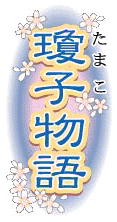|
Miss Nagasaki's Homecoming
Across
a Century |

|
| 5 |
| Miss Kagawa |
Continuing Exchanges |
"Miss Kagawa" is a recent example of a homecoming by a Torei Ningyo (Doll of Gratitude). The doll from North Carolina made a homecoming to Kagawa Prefecture from February 1998 to March 1999. This caused a great sensation.
The opportunity came from the Blue-eyed Doll of Friendship named "Anama Julie" (kept in Nio Town), who is the only Blue-eyed Doll remaining in Kagawa Prefecture. Julie was given in 1927 by the city of Orlando, Florida. A letter inviting her to return home arrived from the mayor of Orlando, who had found out about the doll. This was 1995, the fiftieth anniversary of the end of World War II.
In the summer of that same year, Julie had a homecoming to America 68 years after she had left. The members of the Kagawa Prefecture mission to Florida remember how deeply impressed they were by the reception given by the City of Orlando and by the welcome ceremonies at the elementary, junior high, and high schools in the city. The reason for their deep feelings was that at every welcoming ceremony the importance of "peace and friendship" through the doll was enthusiastically communicated.
"Miss Kagawa, the same doll sent to America as a peace ambassador, will allow the residents of Kagawa Prefecture to consider the foolishness of war, respect for peace, and the importance of friendship." Thus gave rise to the Kagawa Prefecture Blue-eyed Doll Association, which would become the leader of the later movement to bring Miss Kagawa for a homecoming to Japan.

|
|
|
"Miss Kagawa" (right) and the Blue-eyed Doll "Anama Julie" (left) |
|
Starting March 3, 1998, Miss Kagawa was displayed for one week at the Mitsukoshi Takayama Department Store. Afterward, a half year passed while she was restored, and she was displayed again in the prefecture starting in October. She made a exhibition tour to twenty different places.
Yodai Ishii, who served as the Committee's Director General, says, "There were enthusiastic fans following her when she returned since there was no tour in Kagawa Prefecture when Miss Kagawa left for America prior to World War II. Also, there were many older people moved to tears who felt a close relationship with the doll, "It's great you returned. It must have been terrible going through the war."
The homecoming of Miss Kagawa also gave rise to new exchanges. Three younger sister dolls were given to North Carolina by the Committee. Four Friendship Dolls arrived also from North Carolina, and students and teachers at schools also began international exchange activities.
This year on March 3 a Blue-eyed Doll was given to Shirakata Elementary School in Tadotsu-cho by the Highpoint Doll Museum in North Carolina. The Kagawa Friendship Doll Association (Chairman, Shigeo Imaoka), which served as a go-between for this gift, is an organization that the members of the Miss Kagawa Homecoming Committee, which broke up last year, formed with the objective of continuing exchange activities.
"One million residents of Kagawa Prefecture were involved in some way
with the homecoming activities of Miss Kagawa. We want to make use of our
valuable experiences. Through the spirit of the doll exchange we want to
continue to tell about the importance of peace, friendship, and international
understanding to children living in the 21st century." Mr. Imaoka and the
group's members sincerely desire this.
(Culture
Section, Miss Nagasaki Data Collection Team)
Published on August 22, 2001
| Part 1 | Part 2 | Part 3 | Part 4 | Part 5 | Part 6 | Part 7 | Part 8 |